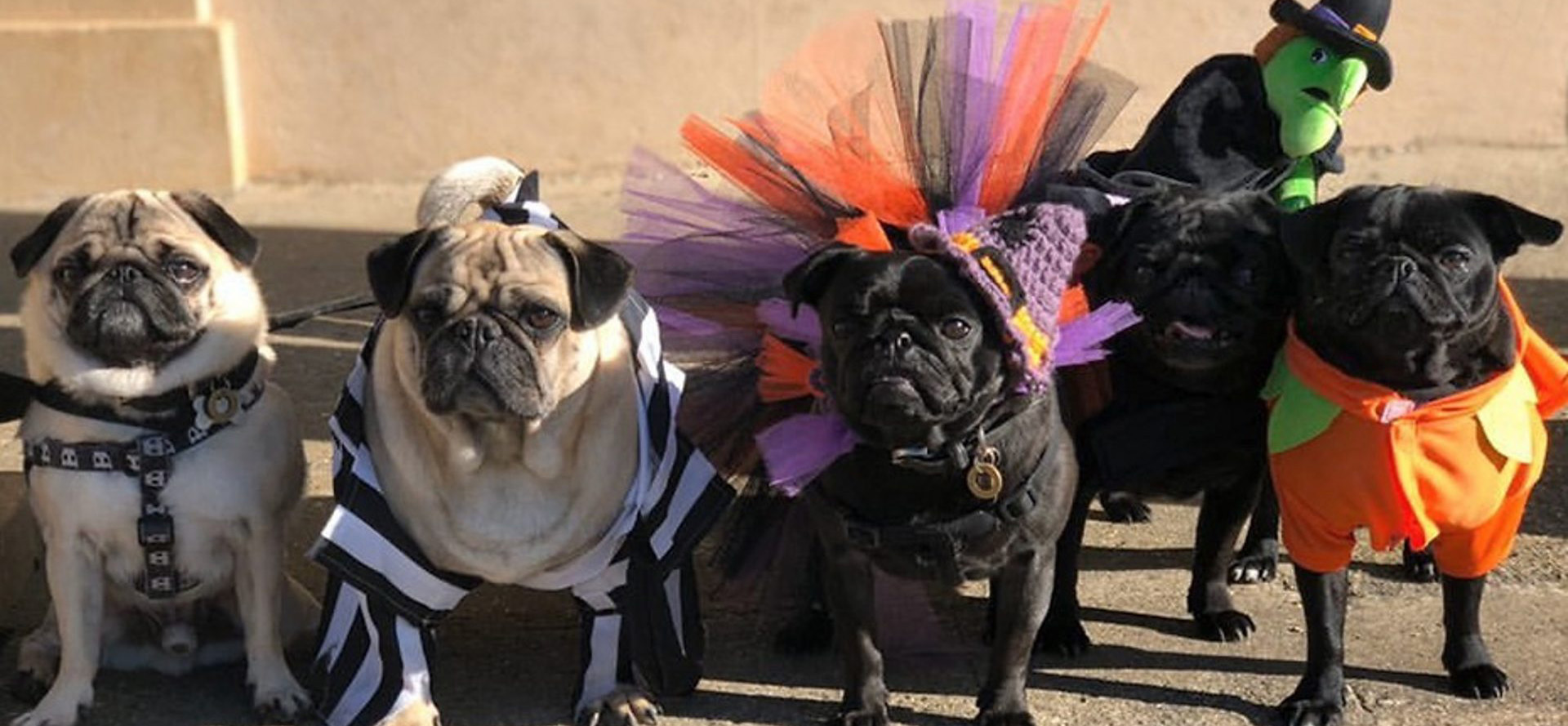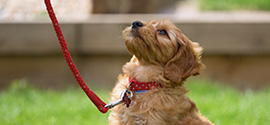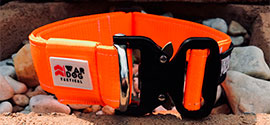Slow Feeder Dog Bowl
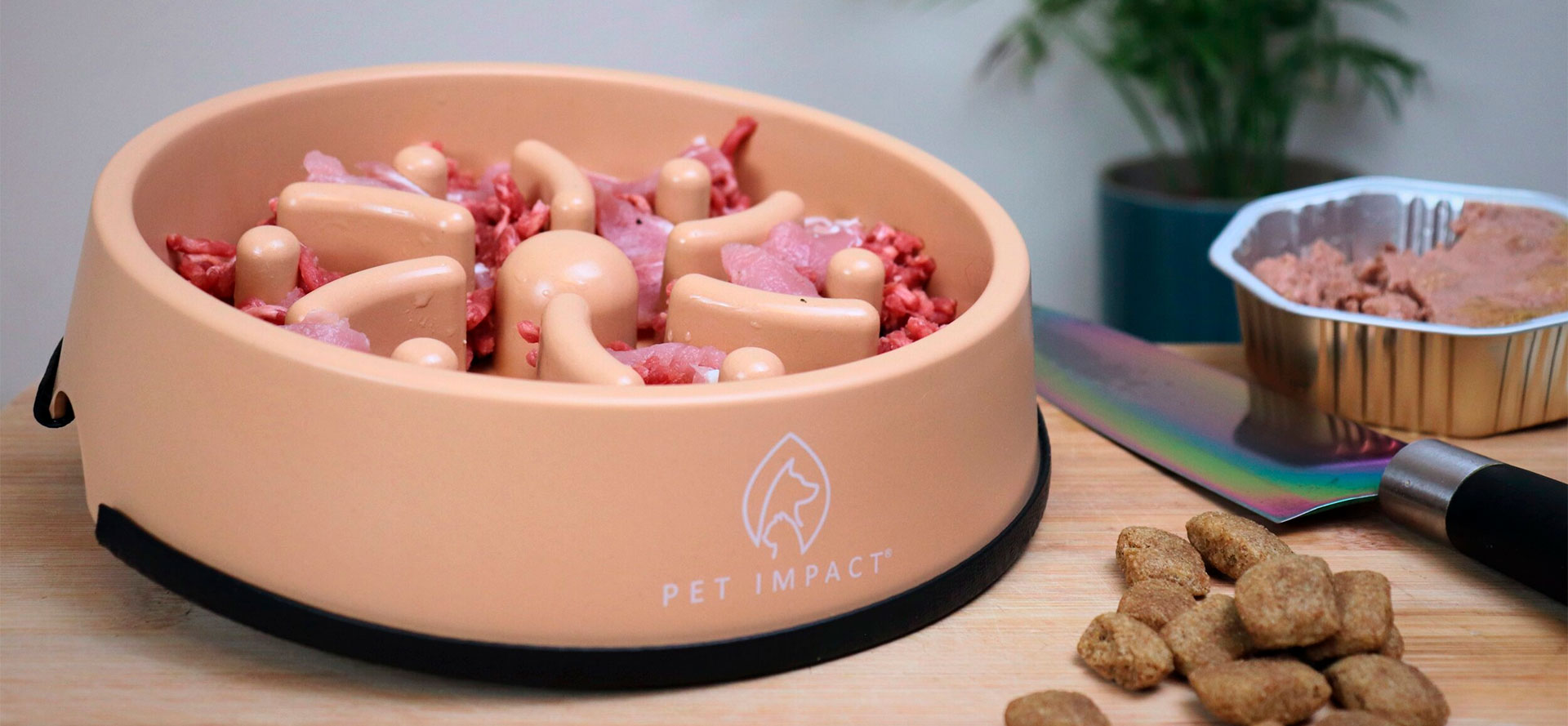
The best-trained dogs still often lack something that we consider basic politeness for humans: table manners. Many dogs, even those who wait for permission to start eating, eat as quickly as possible once they get started. We often think it’s cute when our pups are so excited about their dinner, and there are some popular videos online of dogs doing excited little dances while waiting for food, but the truth is that these eating habits can be dangerous. When dogs eat too quickly, they can unsettle their stomachs and swallow air along with the food, which can cause a number of problems.
Some of these problems are relatively minor, but others are more serious and need to be avoided if at all possible. Vomiting, choking, and bloating are a few of these problems, and dog owners are eager to avoid inflicting these things on their pets with every meal. This is why it has become popular to use a slow feeder dog bowl instead of a regular dog bowl. Slow feeders do what the name implies: they slow down the dog as they eat, which helps to prevent some of the health problems brought on by very fast eating. If your dog is the type to rush through a meal, you may want to consider a slow feeder for them to keep their stomach happy and healthy. You can use our list of the best slow feeders to find a well-made and effective bowl for your pup.
What is a slow feeder dog bowl?
Slow feeders for dogs are bowls that slow down the eating process in some way. The goal of slowing down meals is to lower the risk of health problems that can result from eating too quickly.
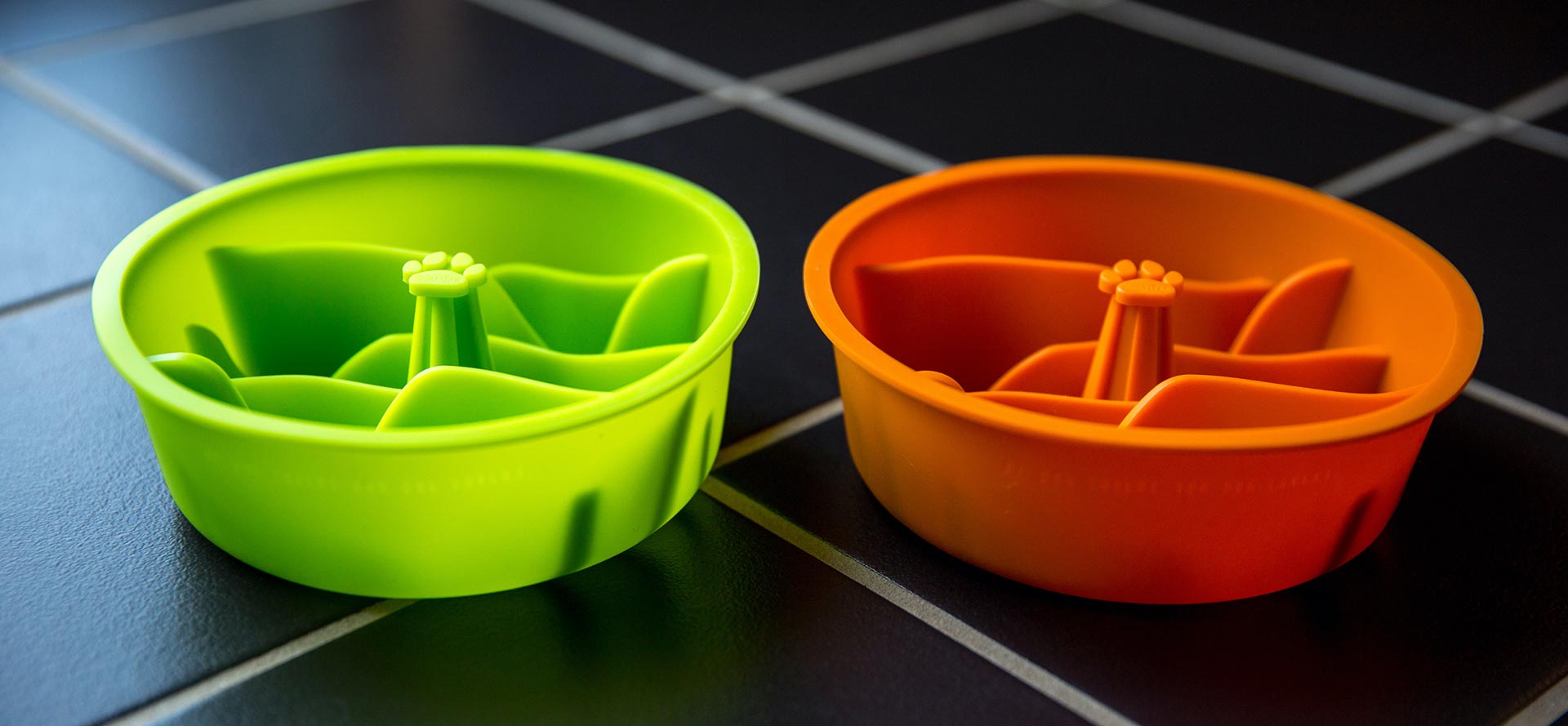
One of the biggest concerns with eating quickly, especially for owners of large-breed dogs, is the risk of bloat. Unlike bloat in humans, which is normally just an annoyance that resolves itself, bloat in dogs can be very dangerous or even fatal. This is because a dog’s stomach, when filled up with food and air, can actually twist and cut off the blood flow to the GI tract. It is an emergency condition that must be treated right away, and the best thing to do is take every precaution to prevent it. Slow feeder bowls and mealtime training are some of the most important ways you can reduce your dog’s risk of bloat.
Other problems, which are not fatal but can still be serious, include vomiting and other gastrointestinal distress. Eating too quickly can often cause a dog to throw up, and while this isn’t cause for concern when it happens once or twice, repeated vomiting can damage a dog’s GI tract over time. If you notice that your dog often vomits after eating quickly, you should try to fix the problem before it escalates, and slow feeders are a great way to do that.
Slow feeder dog bowls work by spreading out the food and making your dog work harder for it so that they can’t inhale an entire bowl of food from one spot at once. There are lots of different designs and types of slow feeders that work based on these principles.
Different Types
There are nearly infinite color, size, and aesthetic variations in slow feeder bowls, but in terms of style, most slow feeders fall into a few main categories:
- Donut-style slow feeder bowl - These bowls spread the food out in the shape of a donut around the edge of the bowl. Imagine taking a regular dog bowl and putting a smaller bowl upside-down in the middle of it; that’s the shape of a donut-style slow feeder. This is the simplest version, but it can be just as effective as the more complex and more attractive styles.
- Pattern slow feeder bowl - These are similar to the donut-style bowls, but instead of having one big raised section in the middle, they have obstacle pieces raised in some sort of pattern. The resulting empty space, which the dog eats out of, is in some sort of shape; spirals, flowers, and stars are some popular variations on this type of bowl.
- Slow feeder mat - This option, while not technically bowl-shaped, achieves the same effect as a slow feeder bowl while also using a flat surface. They are usually made from silicone and include a flat mat with raised ridges in waves, grids, or other patterns that will keep the food in place. They are often easier to clean than hard plastic bowls, which can be difficult to maneuver a sponge through and get food stuck in them.
How to Choose a Slow Feeder Dog Bowl
Since slow feeder bowls are a little more complicated than regular bowls and have more variety, it can be a bit harder to choose the right one for your pup. A couple of things to keep in mind when making your decision are:
- Size - This may seem obvious, but the size of the bowl should correspond to the size of the dog. Even if you don’t think this is totally necessary, it’s important to follow size recommendations. For instance, a big dog may not need all of the space available in a very large bowl, but since they will be able to overturn and throw smaller bowls around easily, a large and sturdy bowl is still the best option for them.
- Face shape - Because of the raised portions and obstacles, the depth of a slow feeder bowl has more of an effect on how easily your dog can eat from it. Very deep bowls with narrow sections for food may be difficult for short-snouted dogs to use, and shallow bowls may not offer enough of a challenge to dogs with large or long faces.
What to Consider When Buying a Bowl
Slow feeder dog bowls can make your life easier and your pup’s life better, but they aren’t perfect. There are a couple of things to consider and be cautious of when buying a slow feeder for your dog:
- Oral injuries - If your dog isn’t careful or doesn’t understand how the slow feeder works, they may try to bite right through the hard plastic. This can cause chipped teeth, cuts inside the mouth, and other similar injuries. To avoid this, introduce your dog to the slow feeder gradually rather than going straight for a full meal, which may encourage them to eat as quickly and carelessly as always.
- Plastic - Strong chewers can chip away at the bowl’s plastic over time, and they may end up ingesting some of it. This can be seriously harmful, so to prevent it, you should always inspect the bowl carefully before feeding. Trim chewed-up pieces off when you can, and be aware of the possibility that you may need to replace the bowl at some point. If your dog is an extremely heavy chewer and this is a big concern, then a silicone slow feeder mat may be a safer option for them.
Conclusion
Slow feeder dog bowls could benefit the majority of dogs by slowing down meals and improving their digestive health. Dogs that eat too quickly and are not discouraged from doing so are at a greater risk for problems like bloat and GI tract damage. To protect your dog, take a look at our list of the best slow feeder dog bowls and pick out one that you think would work for them; you’ll see the difference in their mealtime habits right away.
Tags: pet supply, doggie poop bags, safe flea treatments for dogs, retractable dog leash reviews, dog playpens, cone collar for dog, camera for dogs, 3 bowl elevated dog feeder, feeding dogs raw chicken, can dogs go in pools

